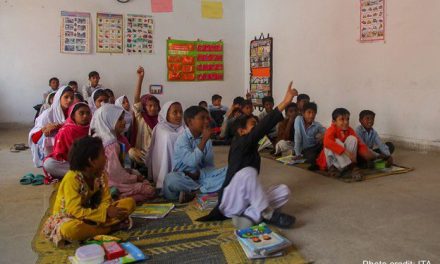This blog was written by Charlotte Jones, Global Head of R&D at Education Development Trust. It was first published on 17th February 2020 on the Education Development Trust website and reposted here with permission.
 Attending the Education World Forum (EWF), I’ve been really inspired by discussions on the future of the education workforce.
Attending the Education World Forum (EWF), I’ve been really inspired by discussions on the future of the education workforce.
There is broad recognition that school systems are changing: policymakers have increased expectations of districts and schools, often decentralising decision-making powers and imparting a sense of urgency for improved learning outcomes in tandem. As policymakers seek to improve school quality, they know that a large part of the answer lies in local leaders who have the power to scale effective practices and directly influence teaching and learning. A growing body of evidence sets out the potential: for example, a study of school leaders in India and several other countries found that a one-point increase on scoring of school management practices was associated with around a ten percent increase in student performance.
The implication for the role of school leaders is significant. As an author of the recent Transforming the Education Workforce report by the Education Commission, I was delighted to hear so many Ministers of Education and global policymakers at EWF in violent agreement – that the role of school leaders is pivotal.
But this also presents challenges. How can we re-shape the role of school leaders to support teaching and learning improvement? How can we rapidly build their capacity to do this, when so many school leaders are burdened with time-consuming administrative duties? Data from the TALIS survey, for example, shows that school principals spend on average 40% of their time planning and managing resources and are often overburdened with administration.
A change is in the air
The debates reminded me of the journey we have been on with policymakers and colleagues in Rwanda – through our DFID-funded Building Learning Foundations programme – who have an ambitious and inspiring vision of school leadership.
In Rwanda, the best school leaders in each district are given a ‘consultant school leader’ or ‘system leader’ role, where they can share effective practice with peers, and they are given a remit to work with district officials to oversee local school transformation. Just 18 months in, we are beginning to see results, with evidence of changes in school leadership and teaching practices. As one senior staff member observed: “A change is in the air, you can really feel the ambition and determination to succeed”.
A new model for school leadership development – early lessons
So what are we learning so far about school leadership transformation at scale? It is still early days, but key lessons for our team so far have been:
1) Give the best school leaders a role and a voice.
Every school system has pockets of excellent practice. The trick is to spot them and scale them. Any serious professional development programme for school leaders should make a virtue of this and offer the very best school leaders a chance to share their practice and expertise with others. In our experience, this needs careful design, to ensure a clear definition of what ‘excellent school leadership’ looks like in the local context, and of the skills these consultant school leaders need to develop to effectively share their practice with other leaders.
2) CPD is not just training, it is an opportunity to motivate leaders to take action.
Gone are the days where bored participants sit in a room and are walked through templates for school improvement planning. At Education Development Trust, we see CPD and systems change as one and the same thing. CPD is the process of practice change. In Rwanda, school system leaders work together in cycles of learning, where they get the chance to develop strategies for teaching and learning improvement, trial new ways of working, and reflect on impact.
3) Peer learning is key
In Rwanda and elsewhere, we’ve been struck by the power of Professional Learning Communities (PLCs), where school leaders meet together to share their progress and experiences. Evidence shows that PLCs can play a really important role in motivating professionals as they learn: it helps to throw open the school doors and gives leaders access to their peers’ expertise. It also helps to embed a deep local knowledge of ‘what good school leadership looks like’ and what change might be possible, as peers inspire each other.
4) Hope for the future
As school leadership reform nudges towards the top of policymakers’ agendas, I hope that more education systems will look to the evidence for ‘what works’ in school workforce reform, and be inspired by examples of ambitious reform such as that led by the Rwandan government.





